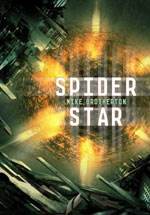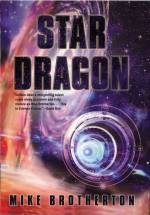Search
Living Around an M-Star: the Red Light District
June 7th, 2008
NOTE: I’m keeping the below post as originally written. It will be superseded by a post to come as the issue is more complicated than I appreciated.
A friend of mine has a story coming out and wanted to doublecheck some issues of colors on a planet orbiting an M-star. My friend supplied me with a technical source:
http://www.giss.nasa.gov/research/briefs/kiang_01/ and the press release is at http://www.giss.nasa.gov/research/news/20070411/.
The thing is, these are terrible! I mean, technically they seem correct and very detailed, based on a paper in Astrobiology last year, but I have a PhD in astronomy and understand the science but I can’t tell what they’re claiming in any specifics. The pictures would be great if they actually specified what sort of planet/star they were talking about.
Well, let’s consider the case of an M-star at any rate, and I’ll give you my take. Stellar classifications depend on the mass and age of a star. The temperature/mass sequence is OBAFGKM (“Oh be a fine girl, kiss me!” is the mnemonic). An M-star is a very low mass star, a few tenths solar, that is much cooler. How cool? Maybe a couple of thousand degrees Kelvin, about 1/3 of the surface temperature of the Sun. A star this cool puts out most of its light in the near-infrared part of the spectrum, and almost no blue or ultraviolet light whatsoever. It doesn’t look white like the Sun. It looks red. This makes a big difference in what things would look like on the surface of a planet in the water zone of an M-star, vegetation or not.
Fred Pohl wrote an interesting novel called JEM I remember reading in my college days. It takes place on a planet orbiting Barnard’s Star, an M-star and things are red, red, red!
The atmosphere will scatter shorter wavelength light preferentially, like on Earth, but a late enough type M-star won’t have much. Compared to the star (which will look big compared to the Sun, if you’re in the water zone where temperatures will be higher), the sky will be more orange/yellow.
The planets can be of all sorts, including like those here on Earth, which do a lot of absorption at red wavelengths. They wouldn’t, I don’t believe, look very green. I suggest they’d look black.
This is a very complicated multidisciplinary problem to simulate, as we not only need to know about the spectrum of the local sun, the atmosphere and what it absorbs, how bright the light is and how dilated the eye, but also to incorporate the response of the eye. The eye sensitivity is peaked at green wavelengths. This is why green lasers, which usually have the same power as red lasers, look so much brighter.
I submit that the color pallet is going to be red, orange, maybe yellow, and black. Something that looks blue under a white light is going to look black under the red light of an M-star. For an experiment, get some red/orange party lights (easier to find at Halloween) and then go look at different colored items under that light. Try different light levels, too, as the eye is less sensitive to color at low light levels.
Under an M-star, the spectrum is limited. It’s like living in a red light district, literally.
You can follow any responses to this entry through the RSS 2.0 feed. You can leave a response, or trackback from your own site.


I think JEM was set on a planet orbiting “Kung’s Substellar Object” or N-OA Bes-Bes Geminorum 8426. JEM comes from “Geminorum”.
Yes, there were many productive purposes that I could have used those brain cells for.
A star this cool puts out most of its light in the near-infrared part of the spectrum, and almost no blue or ultraviolet light whatsoever. It doesn’t look white like the Sun. It looks red.
If I recall correctly, red dwarfs are about as hot as the filament in an incandescent light bulb. Something that saw colour as an octopus does might see that as biased towards redder wavelengths but the unsophisticated human eye will see it as white light.
I’ll give you Jem — that was from memory. The color of M stars is definitely red as you can see by looking at one through a telescope. You’re also right that the temperatures are not too dissimilar between lightbulb filaments and the surface of an M-star. The spectrum of the M-star will be redder because of atomic and molecular absorption bands which preferentially wipe out blue light. Another difference is that the light isn’t concentrated, it’s spread out over probably about four degrees across the sky. Then it becomes a question of light intensity (is it so strong that the weak flux of blue light can be perceived as significant) and the response of the eye.
I think I’m still right, but I confess I’m not as sure. Thanks for pointing this issue out. I think I’ll do a follow-up post later today or tomorrow.
[…] Nicoll on Some Follow-Up on the Post-Starburst Quasar ImagesMeredith on CaturdayMike Brotherton on Living Around an M-Star: the Red Light DistrictJames Davis Nicoll on Living Around an M-Star: the Red Light DistrictJames Davis Nicoll on And […]
[…] At first I thought everything would look red, but decided that was not quite right. Those posts have some very good links as references on this issue, on both the astrophysical and biological sides and I expect to refer back to them in the future. […]
[…] sky, perhaps a little orangish rather than blood red. (See what I wrote last year about this in The Red Light District and Part 2: The Light Bulb […]